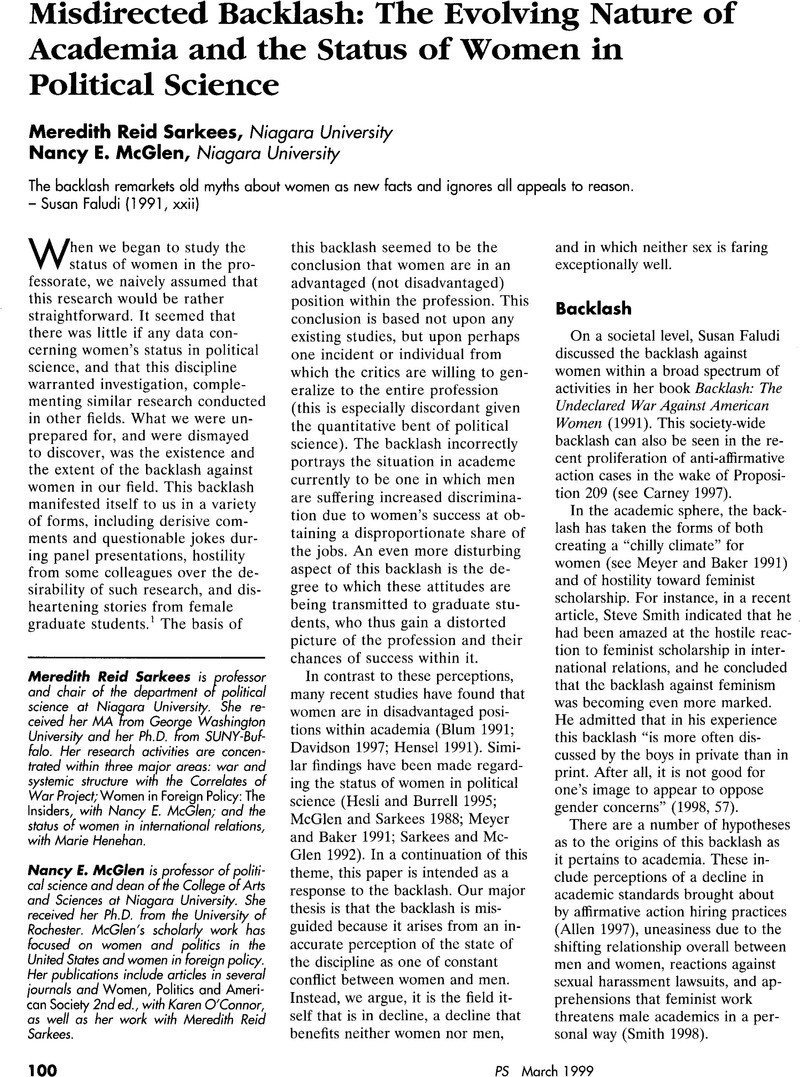Crossref Citations
This article has been cited by the following publications. This list is generated based on data provided by Crossref.
Brown, Diane R.
and
Woody†, Bette
2006.
The New Black - Alternative Paradigms and Strategies for the 21st Century.
Vol. 14,
Issue. ,
p.
209.
Kantola, Johanna
2008.
‘Why Do All the Women Disappear?’ Gendering Processes in a Political Science Department.
Gender, Work & Organization,
Vol. 15,
Issue. 2,
p.
202.
Mitchell, Sara McLaughlin
and
Hesli, Vicki L.
2013.
Women Don't Ask? Women Don't Say No? Bargaining and Service in the Political Science Profession.
PS: Political Science & Politics,
Vol. 46,
Issue. 02,
p.
355.
Lewis, Angela K.
2013.
Expectant and Nursing Academics: The Interview Experience of Moms in Political Science.
PS: Political Science & Politics,
Vol. 46,
Issue. 02,
p.
370.
Vuong, Quan‐Hoang
Nguyen, Huyen Thanh T.
Ho, Manh‐Toan
and
Nguyen, Minh‐Hoang
2021.
Adopting open access in an emerging country: Is gender inequality a barrier in humanities and social sciences?.
Learned Publishing,
Vol. 34,
Issue. 4,
p.
487.



